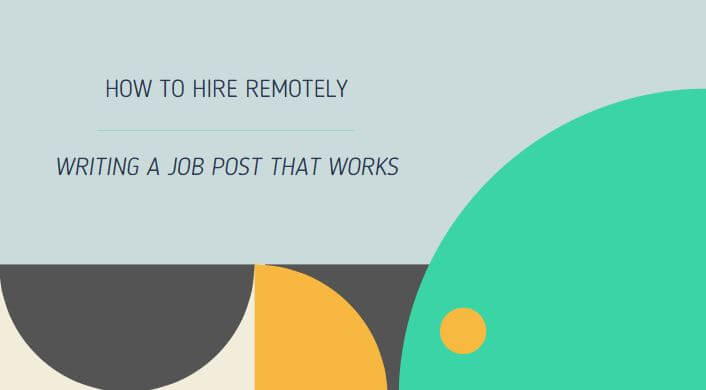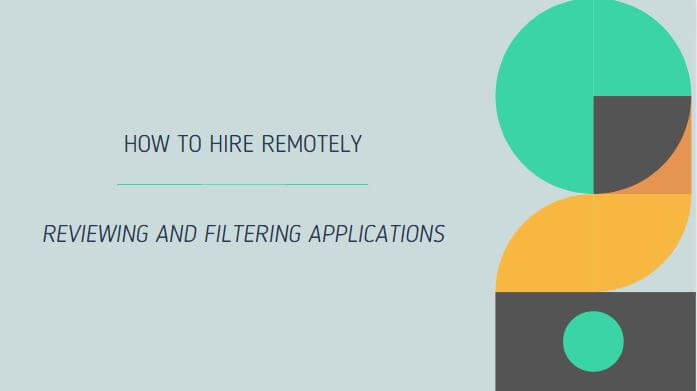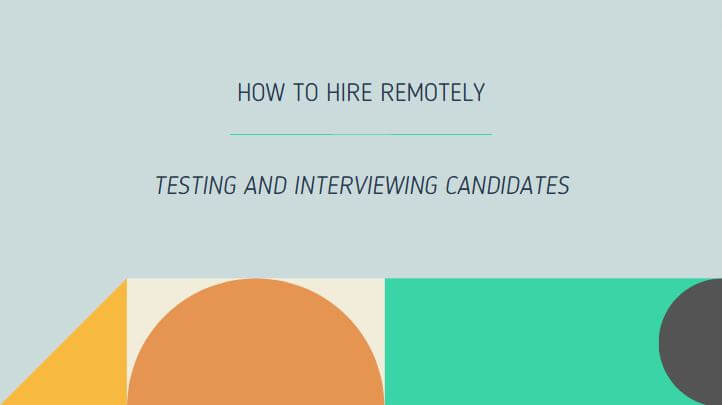- Intro
- Part 1 – Do You Need to Hire At All?
- Part 2 – Writing a Job Post That Works
- Part 3 – Reviewing and Filtering Applications
- Part 4 – Testing and Interviewing Candidates
- Part 5 – Review: Choosing the One
A job post is like a sales page. It needs to attract the attention of the right people. Then, it needs to build interest and trust, and finally, it needs to convince them to apply.
One key thing to remember when writing a job post is that even though you might not enjoy the tasks that this role is going to be doing, someone out there will – probably lots of people. That’s why you have to put yourself in the mind of a job seeker and include what would be important for them to know when considering whether to apply.
From our years of experience and thousands of successful job postings, here are the key headings you should include in your job post:
Start by introducing yourself, your company and your team.
Whether they’re permanent staff, full-time, part-time or freelancers, talk about who’s on the team, how often you get together (virtually or physically), and how you keep in touch throughout the day and the week.
What’s your culture like? How do you have fun?
What are the opportunities for training and progression? No one wants to be stuck doing the same thing forever with no chance to learn and develop their skills.
What would you want to know if you were reading a job post and considering whether to apply?
Whether it’s the culture, the training opportunities, the size of the company or the opportunities for progression, make sure you include things that would appeal to you in the job post.
If you really want to stand out, we suggest including a short video where you will explain what you’re looking for and the difference this role will make to you and your business. This really helps to build trust and capture interest from potential applicants. Just a short 60-second video introducing yourself and the role works great.
You can end your video with something like this:
If this sounds like a fit for you then I look forward to reviewing your application!
This is the section where you talk about the role itself, why are you hiring for it, and what are the objectives. Try to explain what kind of difference this role will make to your business and give the candidates the opportunity to envision their career path if they become a part of your company.
Of course, the most important part of this section are the responsibilities and tasks your new hire will be in charge of.
One effective way to outline the responsibilities is with a sentence like:
If you’d been working for us over the past month, some of the tasks and projects you’d have worked on would include:
...and then you can include a bullet list of tasks that they’d have worked on.
It's also good to outline whether this is a full-time or a part-time role, whether the candidates are required to work during the working hours of a particular timezone, and if there is any flexibility when it comes to the schedule.
Typically called "About You", this is the section where you explain in detail what kind of candidates you're looking for.
- What skills do you need them to have?
- What experience is essential for them to be successful in the role?
- What tools or software do they need to be experienced in and to what level?
- What kind of personality would fit in with the rest of your team?
- What kind of attitude or interests will help them be successful?
For instance, if you’re a photography business hiring for a Customer Support person, then an interest in photography is naturally going to help them relate to your customers and ultimately succeed in the role.
In this section, you can also include brownie points for any skills that are not strictly required but would be beneficial for this role.
You may think that benefits are only reserved for in-office teams, but that's not true. In fact, benefits will help you win over many quality candidates and build a very loyal team.
Some benefits offered to remote workers can include:
- Performance bonuses for exceeding KPIs
- Annual salary increases based on performance
- Stipend for private health insurance
- Office equipment stipend
- Training budget (books, courses, certifications, etc.)
- Yearly team retreats with the company
Outline what the hiring process is going to be like, what stages there are and when they should expect to hear back from you. This helps to set clear expectations upfront.
Often missed, make sure you add instructions on how you want the candidates to apply to your job post. This can also be a great initial test to see which of the candidates follow your instructions.
Before you move on to the next stage, read through your job post.
Does it sound interesting?
Does it give a good flavour of the company and what it would be like to work for you?
Does it sound open and friendly like how you’d talk to someone about the job?
Also, have you been respectful and inclusive with what you’ve written and asked for?
While there are many great candidates available and looking for work, they’re not all hanging out just waiting for your job post to appear.
You have to sell the opportunity and really highlight why they should want to work for you.
Always keep in mind that they may be giving up another job to come and work for you and your business. Their next rent or mortgage payment will depend on you paying them, so trust is vital.
In order to complete the How to apply section of your job post, you’ll need to have a clear idea of how you want them to apply.
You may have covered this when you planned out your hiring process. If not, it’s time to figure this out in the next part of this How to Hire Guide – Reviewing and Filtering Applications.









